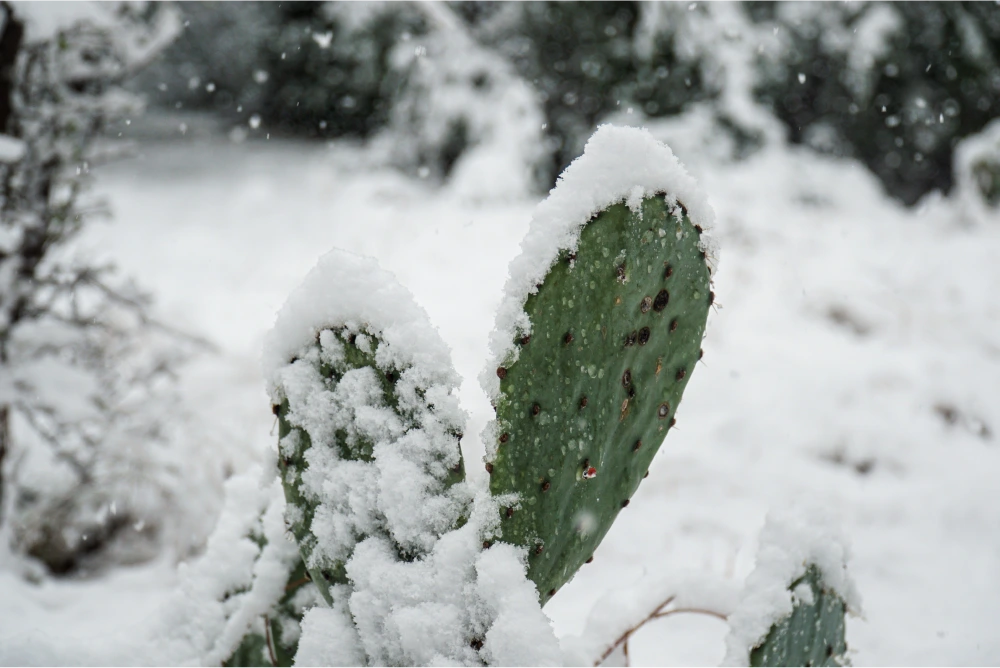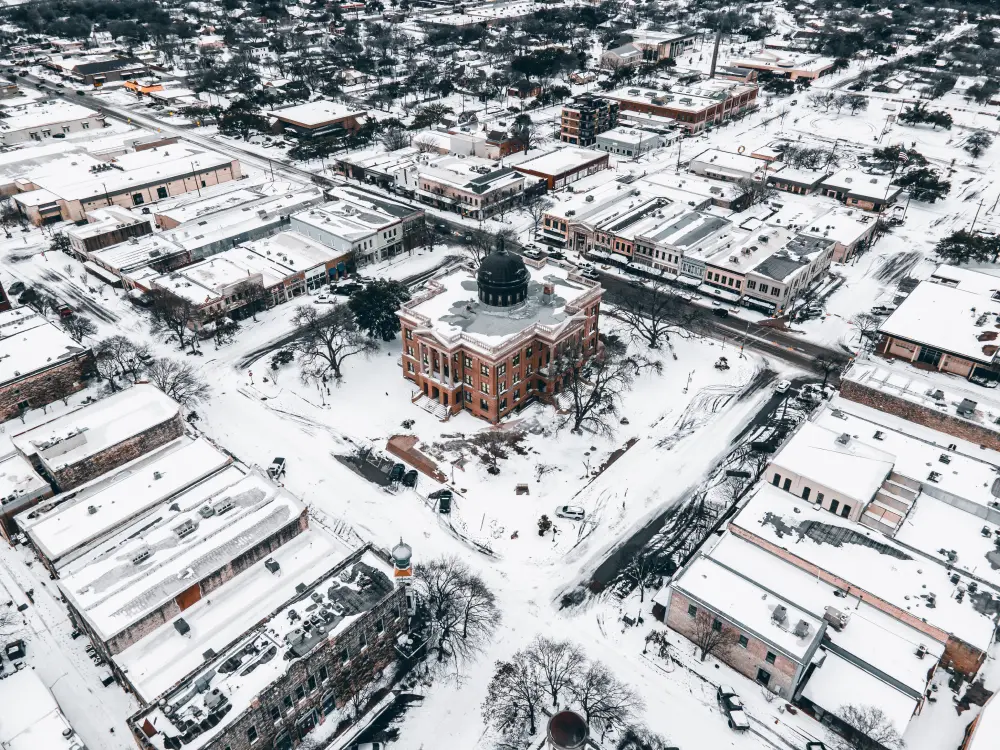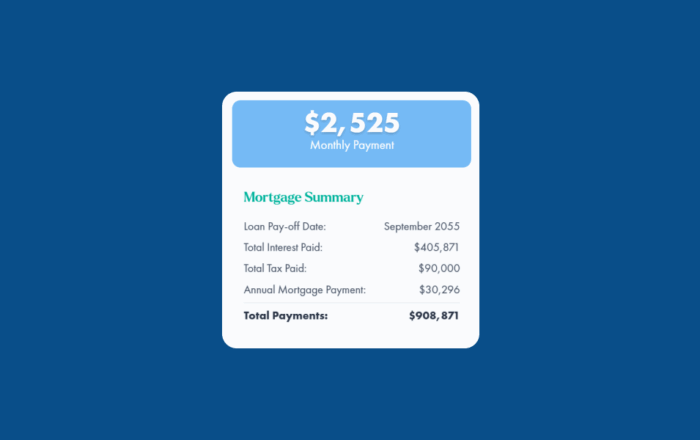Mortgage Calculator
3 minute readEstimate your mortgage payments with BKV Energy's free mortgage calculator
Home > BKV Energy Blog > All Posts > What’s Winter Weather in Texas Like?
6 minute read • Last update January 2025

Considering a move to Texas and curious about what winter has in store? Whether you’re contemplating a relocation or have already moved and are researching how to be better prepared for colder temperatures, we’ve got you covered.
In this quick guide, we’ll run through everything you need to know about winter in Texas, including:
Second in size only to Alaska, the Lone Star State covers a vast expanse of land measuring 268,597 square miles. As such, Texas winter weather can vary significantly depending on where you are, as temperatures between the northern half and most southern areas vary by an average of 20 degrees.
Here’s a quick breakdown of some of the most commonly asked questions about winter weather in Texas.
The first day of astronomical winter in the Northern Hemisphere starts on December 21, so the coldest temperatures are to be expected between then and the spring equinox in March.
Texas is a huge state with a wide variety of topographical and geographical features, including flat desert plains and 2164 named mountains, peaks, and hills. As a result of this and potential huge differences in latitude, winter weather can arrive during different months of the year depending on where you live.
If you live in the Panhandle or North Texas, winter starts earlier compared to Central and South Texas. In the north half of the state, you can expect to see chillier temperatures (or even overnight freezes) arrive during November.
In Central and South Texas, cities like Austin, San Antonio, Houston, or Corpus Christi, November can remain mild or even rather warm, with more winter-like weather arriving in December.
Although winter weather may begin during different months, warmer spring temperatures generally begin to return statewide during March.
The answer depends on where you live in the state. If you live in the Panhandle, winter starts earlier compared to Central and South Texas. In cities in the north half of the state like Amarillo & Lubbock, you can expect to see chillier temperatures (or even overnight freezes) arrive during November.
In Central Texas, cities like Austin, San Antonio, & Waco, November can remain mild or even rather warm, with daily highs ranging between 68 & 70 degrees. Below freezing temperatures typically arrive in December & January.
While weather in South Texas is noticeably milder compared to the rest of the state where freezing temperatures are a rarity. In South Texas, the coldest month on average is January with nighttime lows ranging from the mid-40s to the 50s Fahrenheit. Winters are generally dry, though some areas may experience light rain or drizzle. Even during cold fronts, South Texas sees only brief dips in temperature, and the overall climate remains dry and subtropical.
Although winter weather may begin during different months, warmer spring temperatures generally begin to return statewide during March.
The coldest month in Texas is usually January, followed by February and December, with average daily temperatures ranging from highs of 58-69°F to lows encompassing freezing temperatures of 30°F. However, some years, the worst weather arrives early or late. For example, in 2021, Texas experienced a series of ice storms from February 13-17, unofficially referred to as Winter Storm Uri. In addition to sub-freezing temperatures making life uncomfortable, the frozen precipitation knocked out the power grid, causing statewide water, transportation, and communications disruptions for several days.
Typical monthly high and low temperatures in Fahrenheit for different cities across Texas
| City | JAN | FEB | MAR | APR | MAY | JUN | JUL | AUG | SEP | OCT | NOV | DEC |
|---|---|---|---|---|---|---|---|---|---|---|---|---|
| Abilene | 55/32 | 61/37 | 69/44 | 77/52 | 85/61 | 91/69 | 95/72 | 84/71 | 87/64 | 78/54 | 65/42 | 57/34 |
| Austin | 60/40 | 65/44 | 73/51 | 79/58 | 85/65 | 91/71 | 95/73 | 96/73 | 90/69 | 81/60 | 70/49 | 62/42 |
| Brownsville | 69/50 | 72/53 | 78/59 | 82/65 | 87/72 | 91/75 | 92/75 | 93/75 | 89/73 | 84/66 | 77/59 | 70/52 |
| Corpus Christi | 66/46 | 70/49 | 76/56 | 81/62 | 86/69 | 90/74 | 93/74 | 93/75 | 90/72 | 84/64 | 75/55 | 68/48 |
| Dallas | 55/36 | 61/41 | 69/49 | 77/56 | 84/65 | 92/73 | 96/77 | 96/76 | 89/69 | 79/58 | 66/47 | 57/39 |
| Fort Worth | 55/31 | 61/36 | 68/44 | 76/52 | 83/61 | 91/69 | 97/72 | 96/72 | 89/65 | 79/55 | 67/44 | 58/35 |
| Houston | 63/45 | 67/48 | 74/55 | 79/61 | 86/68 | 91/74 | 94/75 | 93/75 | 89/72 | 82/62 | 73/53 | 65/47 |
| Laredo | 63/44 | 67/47 | 73/54 | 79/60 | 85/68 | 90/73 | 93/75 | 94/75 | 90/70 | 83/62 | 73/52 | 65/45 |
| Lubbock | 52/24 | 58/29 | 66/36 | 75/45 | 83/56 | 90/64 | 92/68 | 60/66 | 83/58 | 74/47 | 62/35 | 53/26 |
| San Antonio | 62/39 | 67/43 | 74/50 | 80/57 | 86/66 | 91/72 | 95/74 | 95/74 | 90/69 | 82/59 | 71/49 | 64/41 |
| Waco | 57/33 | 62/38 | 70/46 | 78/53 | 84/63 | 91/70 | 96/74 | 96/73 | 90/66 | 79/57 | 68/45 | 59/36 |
The title of “coldest big city in Texas” belongs to Amarillo according to data from the National Oceanic and Atmospheric Administration. However, the coldest ever recorded temperature belongs to Tulia (in Swisher County south of Amarillo) at 23 degrees below zero on Feb. 12, 1899.
The short answer is yes, but not consistently across the state. So, the better question to ask is, “Where does it snow in Texas?” Unsurprisingly, the northern and western regions are more likely to see snowfall and freezing rain, especially in more elevated areas.
For example, towns and cities in the Panhandle region receive much more snow than other regions. Conversely, some southern and central Texas locations see occasional flurries at the peak of their cold weather season, but accumulation is less common.

The average snowfall in the state is 0.1 inches. Although this varies depending on which region. The southern region of the state it rarely snows, due to its generally warm climate. The likelihood of snow increases in northern regions, such as the Panhandle and North Texas, where light to moderate snowfall can happen a few times each winter. Central Texas occasionally sees a dusting or light snow, while South Texas and the Gulf Coast rarely experience any snowfall. When snow does fall, it is typically light and melts quickly, though stronger winter storms can bring significant snow and ice to parts of the state.
Snowfall averages for a year for different cities across Texas
| City | Days | Inches | Centimeters |
| Abilene | 2.4 | 3.7 | 9.4 |
| Austin | 0.6 | 0.2 | 0.5 |
| Brownsville | 0.0 | 0.0 | 0.0 |
| Corpus Christi | 0.1 | 0.2 | 0.5 |
| Dallas | 1.5 | 1.7 | 4.3 |
| Fort Worth | 1.8 | 2.0 | 5.1 |
| Houston | 0.1 | 0.1 | 0.3 |
| Laredo | 0.1 | 0.1 | 0.3 |
| Lubbock | 5.7 | 7.0 | 17.8 |
| San Antonio | 0.3 | 0.2 | 0.5 |
| Waco | 0.6 | 0.7 | 1.8 |
Source: https://www.currentresults.com/Weather/Texas/annual-snowfall.php
Due to the unconventional shape of the Lone Star State, the traditional approach to breaking down conditions using the four cardinal points (North, South, East, and West) isn’t particularly effective. Instead, describing the attributes of Texas weather in winter is more straightforward by splitting the state into northern, western, central, and eastern areas.
If you’re considering moving to Dallas, Amarillo, or Lubbock in northern Texas, you’ll need to be prepared for winters with a distinct chill. Daytime highs typically hover in the 40s and 50s, although temperatures on winter nights can dip below freezing, culminating in a frosty, crisp atmosphere.
Occasional winter storms can dust the landscape with snow, creating icy road conditions that require additional caution and preparedness.
With much less wintry precipitation than their northern counterparts, December to February temperatures in western cities like El Paso and Odessa are milder, with daytime highs typically in the 50s and 60s.
However, although the west Texas temperature in winter may be more favorable, it’s also windier here than in other areas due to the Marfa Dry Line. This natural phenomenon is caused by dry desert air from the Rockies surging down to meet moist air from the Gulf of Mexico.
Home to cities like Austin and San Antonio, those living in central Texas experience mild winters with average daytime highs in the 60s and 70s. While snow is a rare occurrence, the occasional cold snap isn’t unheard of.
However, most new Texas residents are surprised to learn that the winter season in the central region is also the driest, with an average of just 7.25 inches of rain over the three months.
South and southeast Texas weather is most relevant to those moving to Houston or Corpus Christi. Understandably, winter storms, snow, and freezing temperatures are a rare phenomenon here, and even winter nights are relatively mild compared to other regions.
That said, the Pacific jet stream can extend farther south into Texas during El Niño weather patterns, making southern regions prone to wetter winters than usual.

While cold waves might be an inconvenience, winter in Texas offers its own charm with plenty of activities to enjoy. So, it’s not all doom and gloom! Here are a few top tips to help you prepare and make the most of the winter weather in Texas.
When you choose a straightforward energy plan from BKVE, you’re not just ensuring greater comfort during the cold season. You’re choosing a more reliable and sustainable future for your family, community, and the rest of Texas.
Plus, our high-efficiency, low-emissions power plant has been modified to ensure it endures the winter weather in Texas as efficiently as possible, reducing the potential for power outages and disruptions.
Enter your zip code today to explore your options and find the best energy plan to keep you warm throughout the cold season.
Graham Lumley, Digital Marketing Manager at BKV Energy, leads digital and traditional marketing strategies, focusing on educating Texans about the state's deregulated energy market. With over 8 years of marketing experience, he creates content to help consumers understand and save on their energy bills, bringing a fresh and dynamic approach to the industry.

Estimate your mortgage payments with BKV Energy's free mortgage calculator

Moving from NYC to Houston isn’t just a change in zip code; it’s a change in lifestyle, budget, and opportunity.
Get $50 off your electric bill!
Use code BKVEJOINUS50
Enter your zip code to shop BKV Energy's affordable, fixed-rate Texas electricity plans. Use the promo code for $50 off your electric bill.